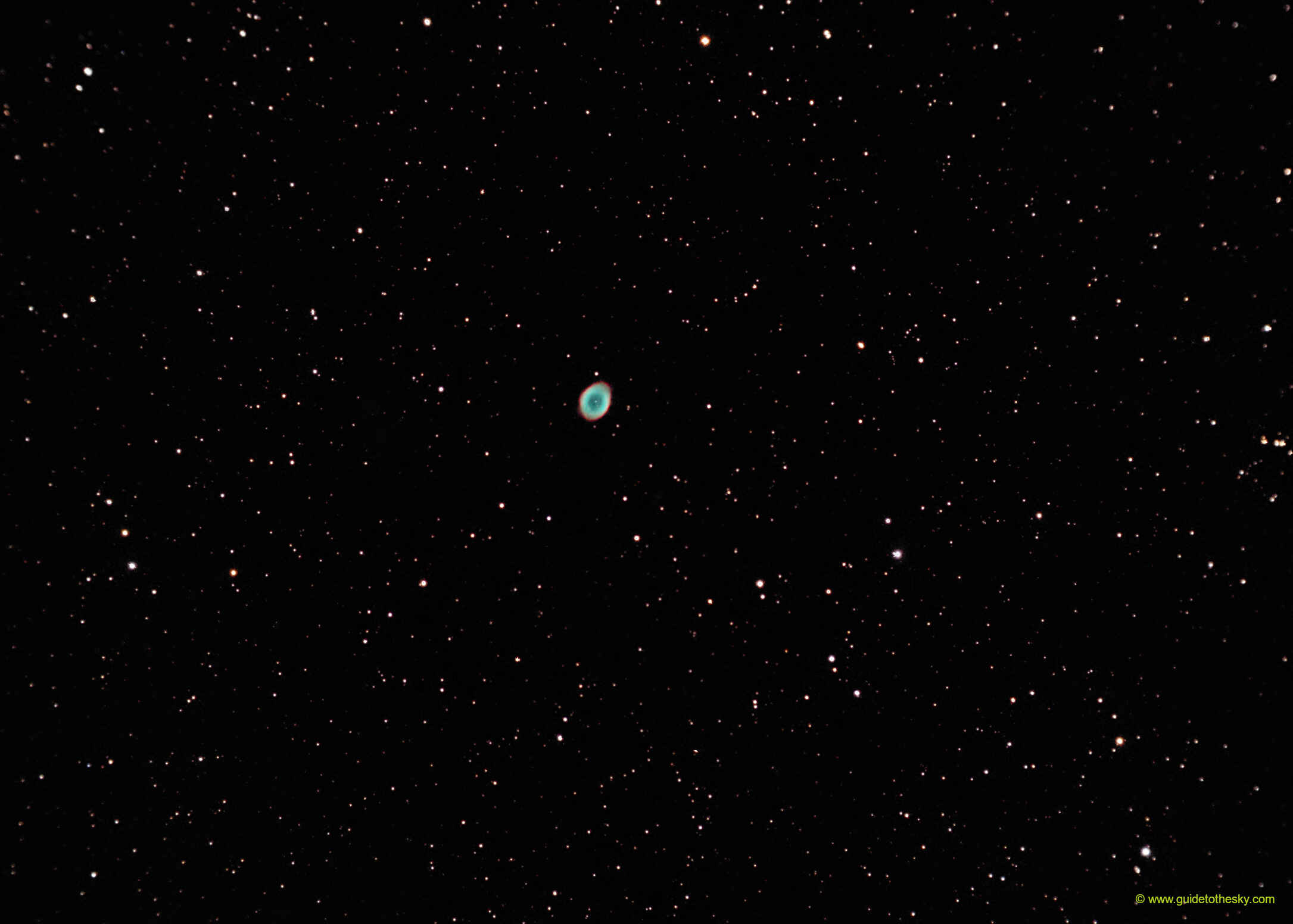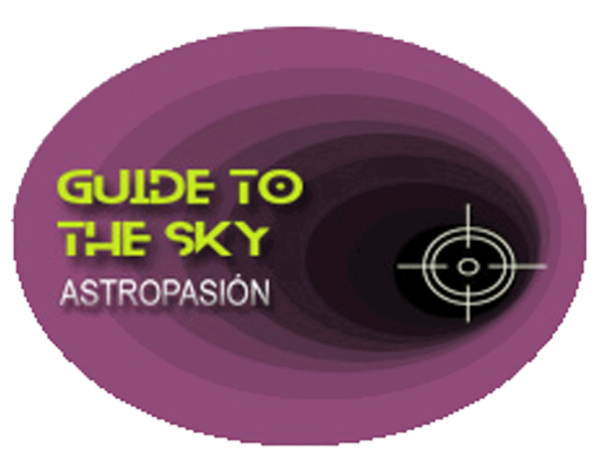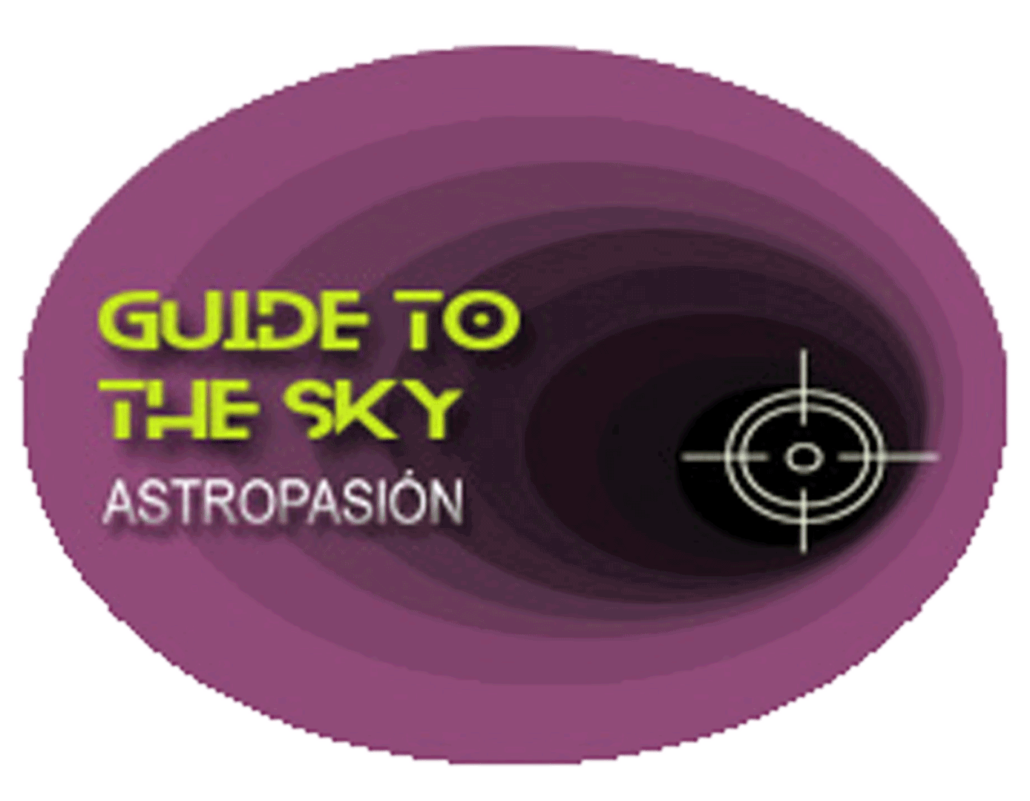Messier 57 - Lyra

Aunque la vemos con forma de anillo, se trata de un objeto esférico de, aproximadamente 1,1 años luz de diámetro brillando a 2565 años luz de La Tierra.
M57 - Nebulosa del Anillo - en la IA
Messier 57 (M57), also known as the Ring Nebula, is a well-known and beautiful planetary nebula located in the constellation Lyra. Here's a breakdown of its key features and information:
Key Characteristics:
- Type: Planetary Nebula
- Constellation: Lyra
- Right Ascension: 18h 53m 35.079s
- Declination: +33° 01′ 45.03″
- Distance: Estimated to be about 2,300 light-years from Earth. This is a relatively recent estimate and earlier estimates were often around 2,000 light-years.
- Apparent Magnitude: 9.38
- Angular Size: 1.46 arcminutes × 1.09 arcminutes
- Central Star: A faint white dwarf with an apparent magnitude of about 15.75. It's notoriously difficult to observe visually due to its small size and the nebula's brightness.
- Age: Estimated to be between 6,000 and 8,000 years old, making it a relatively young planetary nebula.
What is a Planetary Nebula?
Despite its name, a planetary nebula has nothing to do with planets. The term was coined because, through early telescopes, these objects often appeared as small, rounded disks, similar in appearance to planets. In reality, a planetary nebula is formed at the end of a star's life (stars similar in mass to our Sun). Here's the general process:
- Red Giant Phase: As a star like our Sun nears the end of its life, it expands into a red giant.
- Ejection of Outer Layers: The star begins to expel its outer layers of gas and dust into space. This is a relatively slow and gentle process.
- Hot Core: The star's core, now a hot white dwarf, remains behind.
- Ionization: The intense ultraviolet radiation from the white dwarf ionizes (strips electrons from) the ejected gases. This ionization causes the gases to glow brightly, producing the colorful nebula we observe.
- Dissipation: Over tens of thousands of years, the nebula will gradually dissipate into space, leaving behind only the white dwarf.
Appearance and Structure:
- The Ring Nebula gets its name from its prominent ring-like appearance. However, it's actually a more complex, three-dimensional structure. It's thought to be a roughly barrel-shaped or toroidal (doughnut-shaped) structure seen nearly end-on.
- Different colors within the nebula correspond to different elements that are emitting light. Typically:
- Red: Often associated with ionized hydrogen (H-alpha) and ionized nitrogen.
- Green/Blue: Often associated with ionized oxygen.
- Helium: Also present and contributing to the coloration.
Observing M57:
- Finding it: M57 is located between the stars Beta (β) Lyrae (Sheliak) and Gamma (γ) Lyrae (Sulafat). Look for a slightly fuzzy patch of light in that area.
- Telescopes:
- A small telescope (4-inch or larger) can reveal the ring shape.
- Larger telescopes (8-inch or larger) can show more detail and potentially allow you to glimpse the faint central white dwarf under very good seeing conditions.
- Filters: Oxygen-III (OIII) filters can significantly enhance the contrast and visibility of the nebula, as they block out much of the background light and allow the OIII emission to shine through.
- Best Time to Observe: Late spring and summer are the best times to observe M57, as Lyra is high in the night sky during these months.
Significance:
- Stellar Evolution: M57 is an excellent example of the late stages of stellar evolution for stars similar in mass to our Sun. Studying it helps us understand the processes that will eventually happen to our own solar system.
- Chemical Enrichment: Planetary nebulae are also important because they return elements created in the star's core back into the interstellar medium. This enriched material then becomes part of future generations of stars and planets.
- Aesthetic Beauty: Beyond its scientific value, M57 is simply a stunning object that inspires awe and wonder about the vastness and beauty of the universe.
In summary, Messier 57, the Ring Nebula, is a fascinating and rewarding object to observe and study. Its beauty and scientific importance make it a favorite among astronomers and amateur stargazers alike.
Más información sobre Messier 57 en NASA/IPAC.
Mapa alrededor de Messier 57
Otros identificadores de M57:
"Gaia DR3 2090486618786534784","PLX 4377" ,"BD+32 3246" ,"CSI+32-18517" ,"GCRV 11366" ,"GSC2 N0223131306" ,"HD 175353" ,"IRAS 18517+3257" ,"M 57" ,"NGC 6720" ,"PK 063+13 1" ,"PK 063+13" ,"PN G063.1+13.9" ,"PN ARO 9" ,"PN VV 214" ,"PN VV' 466" ,"WD 1851+329" ,"[LFO93] 1851+32" ,"PLX 4377.00" ,"NAME Ring Nebula" ,"[D71] 1851+32" ,"[FA87] 1851+329" ,"[A86] 1851+329" ,"B2.1 1851+32" ,"BWE 1851+3257" ,"GB6 B1851+3257" ,"MITG J185334+3301" ,"MITG J185337+3301" ,"NVSS J185335+330145" ,"WB 1851+3257" ,"87GB 185143.8+325740" ,"WN B1851.7+3257" ,"WEB 16043" ,"Gaia DR2 2090486618786534784",

